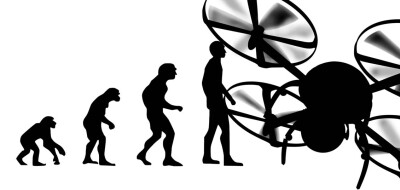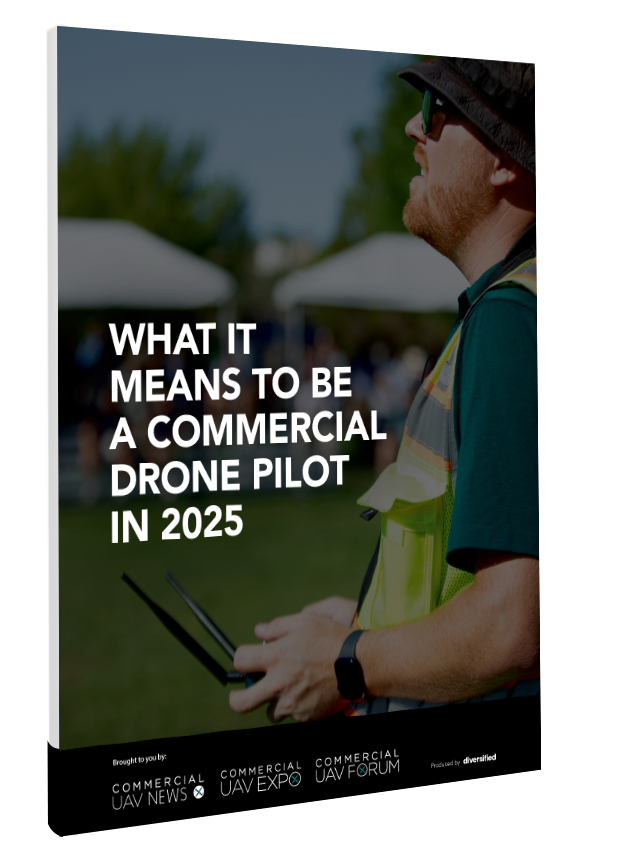Switzerland has positioned itself at the forefront of drone technology on account of the country’s strong research and innovation output, progressive drone operations regulations and a powerful technology ecosystem. Details associated with each of those points are included in a report from Switzerland Global Enterprise that outlines all of these elements. It also included a Swiss Digital Aviation Industry Map that displays well over a hundred companies, highlighting the thriving drone industry that is generating value across the nation. A few examples of this innovation and its impact are below.
Drones used to locate sheltering fawns
In a fascinating application of the technology, volunteers in the Swiss town of Forel are using drones to find fawns, protecting them from accidental harm by farm machinery. Many of these animals are at risk of being mutilated in Swiss agricultural fields, and the Fondation Sauvetage Faons (the Fawn Rescue Foundation) saw how drones could be used to prevent this damage.
Volunteers secure the permission of farmers and then fly their drones high above their fields, using thermal imaging to detect the animals. Using drones, the group finds and warns farmers about nearby fawns, allowing them to adjust their mowing or reaping paths.
It’s an incredible illustration of what it can mean for drones to solve a problem once users have a sense of their capabilities. This application highlights how drones can go beyond boosting efficiency for existing tasks by accomplishing what would otherwise be impossible.
Inspecting a 400’ stack
Based in Zurich, Voliro is developing drones to perform inspection and maintenance tasks in ways that are faster, cheaper and safer when compared to traditional approaches. Their Voliro T is an inspection drone, purpose-built for close-to-surface work at height. Various use cases highlight how their technology has made a difference, but the company was able to quantify this value in a specific way for a leading industrial services provider of end-to-end-solutions.
Bilfinger used the Volirio UT (Ultrasonic Transducer) Thickness Drone to inspect a 400’ Stack. Utilizing this drone solution in place of scaffolding, the team reduced their crew size from 14 to 2, safely completed the work 24 days faster, and saved the client over $165,000. Using the drone this way also allowed the company to ensure the team's complete safety in situations that would have otherwise put them at risk.
The Volirio UT Thickness Drone has been used to inspect stacks and chimneys, storage tanks, silos, boilers, transmission towers and more. Various other customizations include High Temp UT (Ultrasonic Transducer), DFT (Dry Film Thickness) and LPS (Lightning Protection System) Tester among many others that have been used for similar inspections to create even greater value.
Gas Inspection Using OGI
Headquartered in Dietikon, Xer Technologies is dedicated to developing heavy-duty UAS solutions that enables users to take action in a way that benefits their bottom line and contributes to larger sustainability goals. Their first product, the X8, is a heavy duty hybrid-electric UAS.
During a recent webinar, Kristofer Skantze from Xer Technologies showcased the benefits a drone service provider was able to see with their solution as part of a gas inspection using OGI (optical gas imager.) The drone improved the asset inventory database and status while also allowing improvements to the maintenance work order process. It also detected a gas leak, providing immediate savings and climate benefits.
The company has various other use cases available, including a resource that fully explains how the X8 can elevate drone gas detection missions. Other applications that the company focuses on include Search & Rescue, Public Safety, Humanitarian Action and Environmental Missions.
Swiss Alps to be laser scanned by drones
A collaboration between Swiss and Austrian organizations will see them perform large-area laser scanning applications in the Swiss Alps using drones. These tests are designed to capture critical data in the area of alpine environmental hazards or energy production. The tests will demonstrate the efficiency of drone applications with a view to a lower environmental impact as well as significant cost reductions.
While tests like these have been conducted in the past, there is much to be done and learned in the field of snow and mountain hazard research. Mapping missions in the mountains at altitudes of up to 3,000 meters have been conducted, but being able to showcase the specific capabilities of drones in this new series of tests will open up brand new opportunities across the region.
Designed to help stakeholders understand what drones can do when they need to cover large areas, the test series is expected to begin in Dübendorf, Switzerland, and will then be extended to the Alpine region in the course of 2024 and 2025, depending on the results from each individual test series.
These are just a few of the ways that drones are being utilized across Switzerland. Stay tuned for more updates and examples, or get in touch to let us know what companies and use cases we should highlight next.
Want more insights on UAVs Across Europe?
Commercial UAV Expo Europe will bring the commercial UAS ecosystem together in Amsterdam 8-10 April 2025. The event will serve as the pivotal platform for commercial drone professionals across Europe to explore, connect, and innovate within the rapidly evolving world of UAS. Learn more and save the date.
















Comments